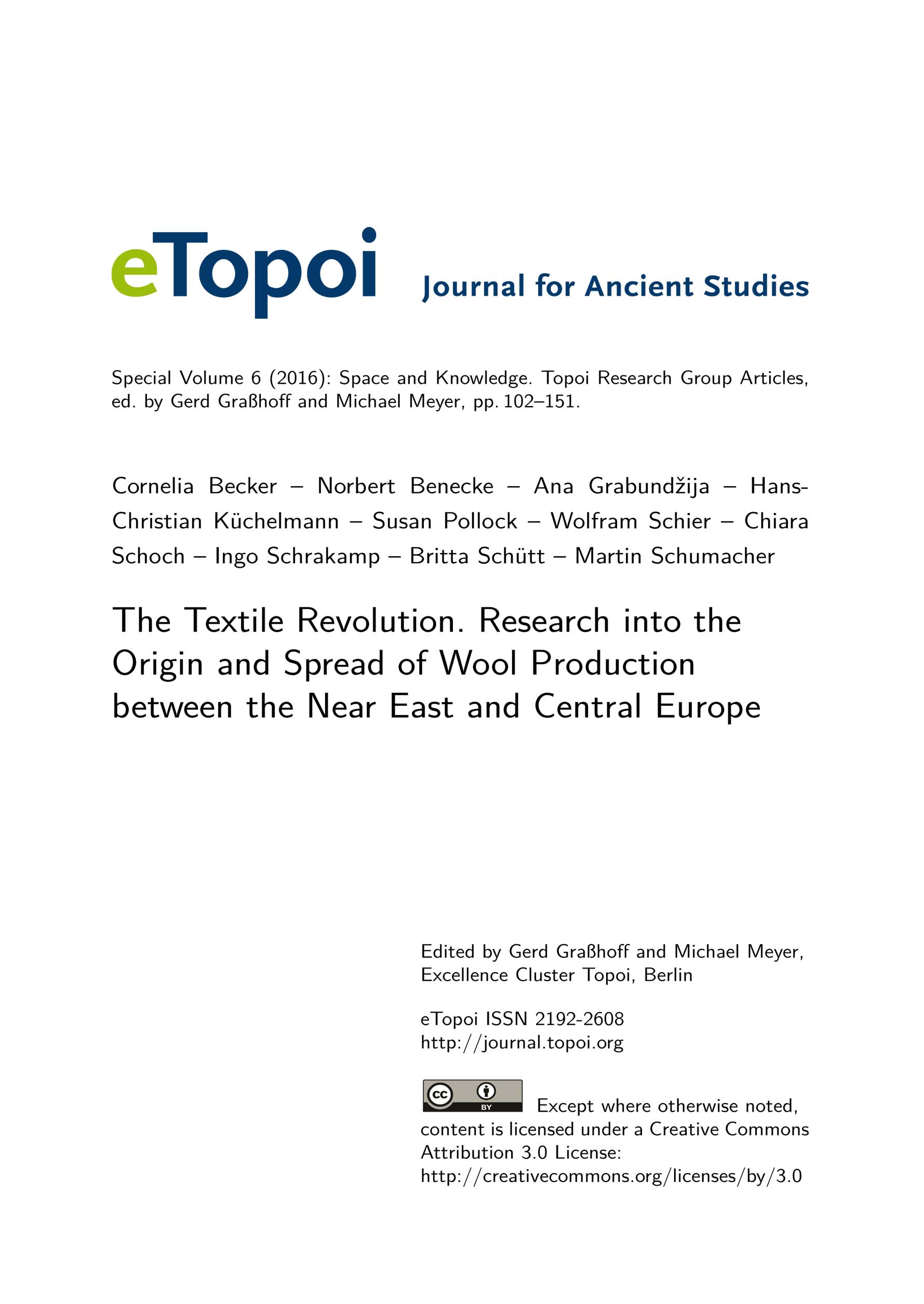The Textile Revolution. Research into the Origin and Spread of Wool Production between the Near East and Central Europe
The objective of the research group (A-4) Textile Revolution is to contribute to research on the still largely unclear introduction of wool production in later Neolithic and Chalcolithic societies from Western Asia to Central Europe. Since direct evidence of wool depends on rare conditions of preservation,a multi-proxy approach based on different kinds of indirect evidence was chosen. The previous history of research on early wool production as well as the domestication history of sheep are reviewed briefly. Anthropogenic impacts on the landscape, possibly related to intensified grazing, are one kind of indirect evidence that we take into account. For the later part of the presumably long-lasting development of wool production, written sources are available, the earliest of which date to the Late Uruk and Jemdet Nasr periods (end of the 4th to beginning of the 3rd millennium BCE) in Mesopotamia. Indirect archaeological evidence consists of the tools used in textile production, among which spindle whorls and loom weights occur most frequently. Since they are not a priori specific to the type of fibre, be it linen or wool, statistical evaluations of metric data are necessary. Zooarchaeological analysis of large samples of animal bones from a wide spectrum of sites and time slices is a further crucial element of our multiproxy approach. Both the demographic composition of herds and metric data indicating changes in animal size can yield indirect evidence for incipient or increasing importance of wool production. This article offers an overview of these different sources and methods, specific to the disciplines involved, and presents some preliminary results.
The objective of the research group (A-4) Textile Revolution is to contribute to research on the still largely unclear introduction of wool production in later Neolithic and Chalcolithic societies from Western Asia to Central Europe. Since direct evidence of wool depends on rare conditions of preservation,a multi-proxy approach based on different kinds of indirect evidence was chosen. The previous history of research on early wool production as well as the domestication history of sheep are reviewed briefly. Anthropogenic impacts on the landscape, possibly related to intensified grazing, are one kind of indirect evidence that we take into account. For the later part of the presumably long-lasting development of wool production, written sources are available, the earliest of which date to the Late Uruk and Jemdet Nasr periods (end of the 4th to beginning of the 3rd millennium BCE) in Mesopotamia. Indirect archaeological evidence consists of the tools used in textile production, among which spindle whorls and loom weights occur most frequently. Since they are not a priori specific to the type of fibre, be it linen or wool, statistical evaluations of metric data are necessary. Zooarchaeological analysis of large samples of animal bones from a wide spectrum of sites and time slices is a further crucial element of our multiproxy approach. Both the demographic composition of herds and metric data indicating changes in animal size can yield indirect evidence for incipient or increasing importance of wool production. This article offers an overview of these different sources and methods, specific to the disciplines involved, and presents some preliminary results.

